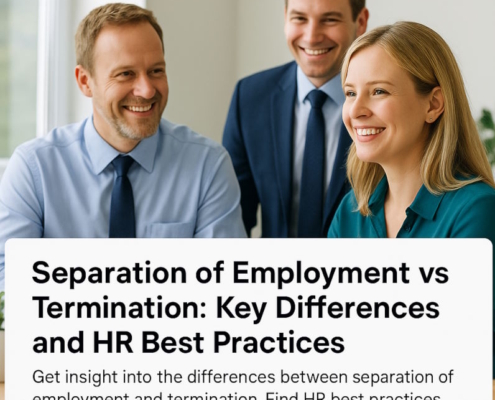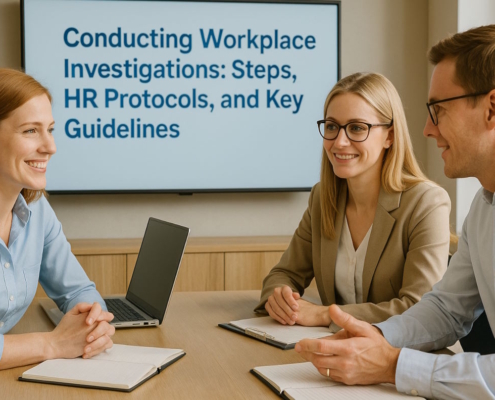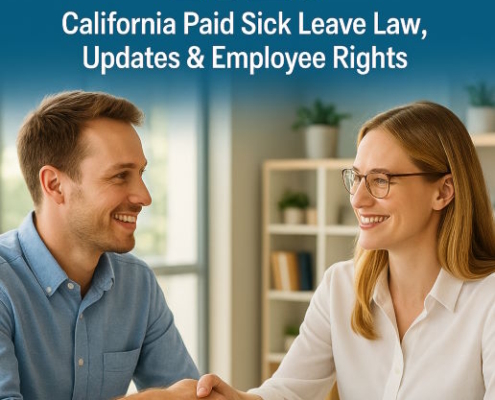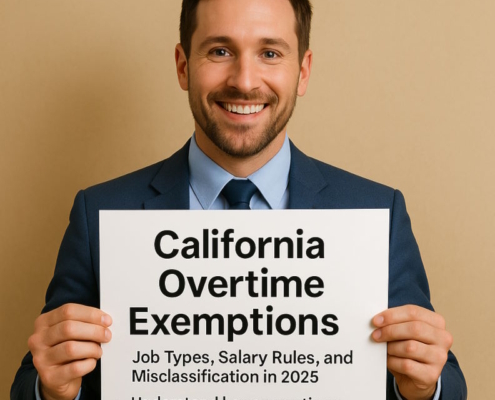What is the length of maternity leave in California?
Taking time off work to care for a new baby, whether biological or placed via adoption, is known as maternity leave. There is a legal entitlement for many pregnant women in California to take time off work without fear of losing their employment, and some of these women even have the ability to receive payment while they are away on maternity leave.
This article delves deeper into these rights and additional statutes safeguarding maternity leave for workers in California.
Many workers are entitled to paid leave prior to, during, and following the delivery of a child. In California, there are typically three different kinds of parental leave:
- Pregnancy Disability Leave: If an employee experiences a disability during her pregnancy or after the birth of her child, she is eligible for a maximum of four months of maternity leave while her disability lasts, provided that specific conditions are met.
- Family Leave: Workers at companies with five or more employees are entitled to a maximum of twelve weeks of family leave to spend time with their child, likewise subject to certain conditions.
- Reasonable Accommodation Leave: Employers may be obligated to accommodate their employees’ disabilities related to pregnancy, even after they have used other forms of leave, which may involve additional time off.
By taking these forms of leave in sequential order, many employees are able to take as much as seven months of maternity leave per pregnancy. If an employee’s impairment is connected to their pregnancy, they may be eligible to take more leave as a reasonable accommodation.
While on maternity leave, some employees may be eligible for monetary compensation or other benefits. There is a difference between the right to take leave and the right to pay while on leave.
Employers are not required to pay employees during maternity leave unless there is a specific legal entitlement to do so.
Before we get into the specifics of the various forms of unpaid maternity leave, let’s take a closer look at the criteria for qualifying.
Pregnancy Disability Leave
Many California workers are eligible for pregnancy disability leave (PDL) if they have a mental or physical impairment during their pregnancy, the delivery of their child, or a connected medical condition. To fulfill this criteria, California law specifies two things:
This pregnant disability leave policy applies to most businesses in California with five or more employees, and it requires that either the employee or her child be disabled as a result of the pregnancy or a related medical condition.
Additionally, the company must fall under the purview of this statute.
Both conditions must be satisfied for the woman to be eligible for leave throughout the duration of her pregnancy, labor, or associated medical condition. The maximum amount of time off that may be taken during a pregnancy is four months.
You are not required to use all of your pregnant disability leave benefits at once in California. Instead, it can be spread out during the pregnancy or after giving birth. This is useful for women who have short-lived or intermittent health issues.
Definition of “Disability”
The primary concern for women is whether they are really impaired due to their pregnancy, the process of giving birth, or any associated medical condition. Typically, being pregnant is not seen as a handicap in and of itself. However, the employee might become legally incapacitated if difficulties during pregnancy occur.
According to her doctor, a woman is considered incapacitated throughout her pregnancy if she is unable to carry out any of her job’s important responsibilities due to her condition.
Most pregnant women will start to physically struggle with at least one of their job’s critical tasks by the 36th week of their pregnancy. At that stage, even prolonged desk work might become exhausting. As a result, about week 36 is when physicians often discover their patient is unable to work.
The worker may become incapacitated at an early stage if issues arise. According to these guidelines, the employee is eligible to start her pregnant disability leave early if she suffers from any of the following conditions:
Symptoms such as severe morning sickness, complications during pregnancy, requirement for bed rest, gestational diabetes, pregnancy-induced hypertension, preeclampsia, postpartum depression, delivery, complications during or after the pregnancy, and recovery after giving birth, experiencing complications during or after the pregnancy.
Please note that this is by no means an all-inclusive list. Workers could be eligible for maternity leave if they suffer from a separate disability that is associated with pregnancy or giving birth.
Birth is, needless to say, a physically demanding ordeal. Because of this, problems caused by pregnancy will last after birth. A normal recuperation period for a vaginal birth without problems is six weeks, however this varies from woman to woman. The usual healing period after conventional surgeries, such as cesarean sections (c-sections), is eight weeks or longer.
Throughout this period of recuperation, women are still regarded as “disabled” due to their pregnancy under California’s pregnancy disability leave statute—if, according to her physician’s assessment, she is unable to carry out a single or more of her job’s fundamental duties as a result of giving birth.
Who Are the Covered Employers?
When an employer meets one of the following criteria, they are obligated by California law to offer pregnant disability leave:
An employer can be an individual or company that typically employs five or more individuals, an institution that functions as a representative of another employer, or a governmental body at the state or municipal level.
Encouraging qualified employees to take pregnant disability leave is a requirement of California’s pregnancy disability leave statute, which applies to employers that fall into certain categories.
Importantly, “employers” for these reasons do not include certain religious nonprofit organizations and businesses. Therefore, California’s statute regarding pregnant disability leave does not apply to such religious companies.
No Other Requirements for Participation
There are no further qualifications for eligibility for pregnant disability leave; it is unique in that it is available to all employees of covered businesses who are able to conceive and have a qualifying impairment.
What this implies is that part-time workers have the same rights to disability leave due to pregnancy as full-time workers. Just like that, pregnancy disability leave does not have a minimum service limit, so even newly recruited employees are eligible to use it. What’s more, transgender employees who experience difficulties connected to pregnancy are specifically recognized.
Return to Work Following Disability Leave for Pregnancy
If an employee’s position will not be available upon their return, then the right to take time off is useless. Therefore, California law provides tough reinstatement safeguards for workers who return from disability leave due to pregnancy.
In most cases, employees who take advantage of their pregnant disability leave will be allowed to return to their previous or similar employment, with a few exceptions. The worker has the option to request that the boss put this assurance in writing.
This entitlement is usually not enforced when the employee’s position would have been different, for valid business reasons, even if she hadn’t taken maternity disability leave.
Employers may be able to prove that a pregnant disability leave employee would have lost her job due to large layoffs or other valid business reasons, even if the absence was unconnected to the layoffs.
However, under California law, businesses cannot refuse reinstatement only because it would be difficult for them to keep the person on the job.
Temporary Leave for Bonding and Family Time
Eligible employees in California are granted 12 weeks of family leave annually by law. This time can be utilized by both men and women to form a relationship with a new child following their birth, adoption, or foster care placement.
In order to make the most of the employee’s maternity leave, it can be taken after she has used any disability leave she might be eligible for during her pregnancy. Therefore, employees can take up to seven months of leave per pregnancy, depending on how long her disabilities related to the pregnancy last.
Before an employee may take child-bonding leave, the following three conditions must be satisfied, starting from January 1, 2021:
For an employer to be eligible for paid leave, there are three requirements: (1) they must have five or more employees;(2) the employee must have been with the company for at least one year before the leave begins; and (3) within the last twelve months, the employee must have put in a minimum of 1,250 hours of labor.
If all three conditions are met, managers will usually have to give qualified workers family leave to spend time with their children.
Taking Family Leave
There is no set time limit for taking family leave; however, it must be finished within one year after the kid is born, adopted, or placed in foster care.
Employees may be required by their employers to take at least two weeks of leave every two months. But the legislation also allows the worker to take two short breaks of less than two weeks each.
This is how it works. An employee has the option to request bonding leave in increments of less than two weeks twice. After either of those options has been exhausted, the employer might mandate two-week blocks for the new parent to connect with their child.
Return to Work Following Family Leave
Upon returning from parental leave, the majority of employees are entitled to be reinstated with their company. This remains valid regardless of whether the employee’s role was altered or substituted to accommodate their absence.
If an employee’s employer decides to put them back in a different role, it has to be fully comparable to their old one in terms of salary, benefits, schedule, shift, location, and all other aspects of the job, including perks and status. This is known as the right to reinstatement.
The duties and obligations of the new role must be same or very comparable, requiring equal or nearly equal levels of competence, effort, duty, and responsibility.
It is also necessary to provide an employee with a reasonable chance to meet those important standards if she is no longer qualified for the job when she returns to it because she missed training or other events that occurred while she was off.
Using Leave as a Reasonable Accommodation
The state of California has laws that protect employees from discrimination based on their mental or physical disability. This law also applies to pregnant women who may have health problems.
California law mandates that employers who are subject to the anti-discrimination statute must provide reasonable accommodations to their employees who have disabilities. An accommodation can be defined as a modification to the working conditions that allows the employee to carry out the necessary duties of their job.
An important point to note regarding maternity leave is that a “reasonable accommodation” may occasionally encompass a leave period, regardless of whether other forms of leave have been used up.
To qualify for a reasonable accommodation, an employee must meet four criteria:
First, they must have a qualifying disability that hinders their ability to do their job duties.
Second, the accommodation must not put an undue burden on the employer.
Lastly, the employee must be able to perform their job duties even with the accommodation.
As mentioned above, the legislation pertaining to pregnant disability leave uses the same concept of “covered employer” for these reasons. Next, we will examine the other prerequisites in greater detail.
Conditions and Disabilities That Are Covered
According to the legislation, an employee can only be eligible for a reasonable accommodation during maternity leave if they are physically or mentally disabled and their capacity to do daily tasks is impaired in some way.
1. Physical Disabilities
Typically, a physical disability is defined as any physical impairment, cosmetic deformity, or anatomical loss that impacts a significant life activity and impacts one or more of the body’s main systems.
A person with a physical handicap might prove their condition in a number of ways. The standard method involves displaying three elements:
Disfigurement, loss of function, or other physiological sickness, ailment, or condition is considered a physical disability for this employee. Damage to a major biological system occurs when an impairment impacts the following systems: the nervous system, the immune system, the muscles and bones, the senses, the heart, the lungs, the digestive system, the genitourinary system, the skin, the blood and lymphatic systems, and the endocrine system. The ailment restricts a significant life activity.
The word “major life activity” is used in a wide sense, meaning that a condition restricts a major life activity if it makes it difficult to perform that activity. Working, essential daily functions (such as walking, eating, and sleeping), and typical social activities are all part of it.
Another way a worker might prove they are physically disabled is by providing evidence of:
This individual has a medical condition that necessitates specialized training or assistance with daily tasks. They have a medical history of any kind, including but not limited to: a disease, condition, disorder, cosmetic disfigurement, anatomical loss, or impairment. Alternatively, their employer may mistakenly believe that they have a physical disability.
Physical disability is defined under California law to encompass, in addition to the basic criteria mentioned before, the following conditions:
Some examples of disabilities include being deaf or blind, having missing limbs (partial or total), having trouble moving around without a wheelchair, having cerebral palsy, and having chronic or episodic health diseases including HIV/AIDS, epilepsy, hepatitis, seizure disorder, multiple sclerosis, diabetes, heart disease, and circulatory illness.
If an employee’s condition is transient and minor, it does not qualify as a disability. Conditions that are insignificant usually do not have significant long-term implications. Some examples are:
The common cold, seasonal or common influenza, little cuts or scrapes, strains, aches and pains in the muscles and joints, bruises, headaches that are not migraines, and gastrointestinal illnesses that are not chronic but mild.
In most cases, the complications that arise during pregnancy and delivery are more severe than those mentioned before.
Some examples of disabilities include being deaf or blind, having missing limbs (partial or total), having trouble moving around without a wheelchair, having cerebral palsy, and having chronic or episodic health diseases including HIV/AIDS, epilepsy, hepatitis, seizure disorder, multiple sclerosis, diabetes, heart disease, and circulatory illness.
If an employee’s condition is transient and minor, it does not qualify as a disability. Conditions that are insignificant usually do not have significant long-term implications. Some examples are:
The common cold, seasonal or common influenza, little cuts or scrapes, strains, aches and pains in the muscles and joints, bruises, headaches that are not migraines, and gastrointestinal illnesses that are not chronic but mild.
In most cases, the complications that arise during pregnancy and delivery are more severe than those mentioned before.
2. Mental Health Issues
Hormones are particularly vulnerable to the changes that occur during pregnancy and delivery. This can be a natural and physiological response. In this context, a mental handicap is defined as any psychological or mental condition that restricts a significant life activity.
Generally, people with mental disabilities, whether they are workers or job candidates, have the right to be treated fairly and without bias. Similarly, employers cannot discriminate against someone just because they believe they have a mental handicap, regardless of the truth of that perception.
The following are some cases of qualifying mental disabilities:
Disorders related to emotions, mental health, intellectual or cognitive capacities, organic brain syndrome, specific learning difficulties, autism spectrum disorders, clinical depression, schizophrenia, bipolar disorder, PTSD, and OCD
Despite the fact that many of these behavioral issues may be considered mental disorders, California law expressly does not cover them. Among the pregnancy-related exclusions, substance addiction disorders caused by present illegal drug use stand out as the most significant.
“Reasonable Accommodations” in general
A reasonable accommodation, as previously stated, is a modification to an employee’s working conditions that allows them to carry out the vital duties of their job.
The nature of the handicap and the employee’s employment will determine the sort of modification that is required. The question of whether or not a proposed accommodation could be considered reasonable is a matter of fact and can be the topic of a great deal of dispute.
Employers must take into account “any and all” reasonable accommodations they are aware of, unless doing so would cause an undue burden, and courts often have a flexible stance when deciding whether adjustments are acceptable.
Furthermore, while determining the type of accommodation to implement, the employer is required to take the employee’s preferences into account. Having said that, employers retain the authority to pick from a range of fair and effective options.
Be advised that employers are not obligated to accept an accommodation if it will hinder the employee’s ability to carry out the job’s essential tasks. The law does not mandate that employers provide reasonable accommodations for employees with disabilities if doing so would put their health or the health of other employees at risk.
Making current facilities easily accessible to people with disabilities is a common example of a reasonable accommodation. Other examples include reorganizing jobs or duties, changing the due date or method of completion, or rescheduling tasks. The most suitable accommodation will differ for each job.
The employer might have to let the worker take time off for treatment and recuperation if certain circumstances apply.
Nevertheless, it is crucial to note that employers often consider leaves of absence as a final option before allowing them.
Identifying “Essential” Job Responsibilities
If a reasonable accommodation would allow an employee to carry out the essential tasks of their employment, then the employer is compelled to make such accommodation. In other words, according to California law, an employer can usually fire an employee even if they have a reasonable accommodation and still can’t do their job.
The basic responsibilities of a position at work are known as an employee’s essential job functions. Three justifications for a job function to be deemed important have been supplied by California legislation and regulations:
If the existence of the position is contingent upon the performance of a certain function, then that function is vital to the job. The job function may be crucial if the employer has a restricted number of employees and cannot spread it among them. In cases when the employee’s competence in carrying out a highly specialized task was a key factor in their hiring,
These are, of course, by no means the only scenarios in which a function may be considered crucial to the position. Courts could also determine that a function is crucial in other cases.
The “marginal functions” of a job are not the same as essential duties, according to the courts. A marginal function is one that another employee could do or that might be done differently. It’s also called marginal if the company would still require someone in that position even if that person wasn’t doing the job.
The easiest approach to understand these guidelines is to consider a job function vital if it would force the company to recruit a new worker if the current employee were unable to do it. It is probable that the function is minor if that is not required.
The employee has the burden of proof in a court of law proceeding to demonstrate that they could have carried out the job’s essential tasks with the assistance of a reasonable accommodation.
When Difficulties Are “Undue”
An employer is likely to find certain accommodations to be slightly inconvenient. Thankfully, employers are still required to provide reasonable accommodations for their workers’ known disabilities, even if doing so causes them some difficulty. There must have been excessive difficulty for the employer.
The phrase “undue hardship” refers to any measure that would put an undue burden on the employer in terms of effort and cost. When deciding whether an accommodation would be considered an undue hardship, courts take into account many considerations, such as:
The financial resources of the employer, the kind and expense of the necessary lodging, the effect on the employer’s business operations, and the total size of the company are all factors to consider.
Every company is unique, that much is obvious. Courts may take different facts into account depending on the specifics of each case.
Being Obligated to Participate in a Collaborative Approach
In order to find out if a reasonable accommodation is available, employers must have an interactive process with their employees. This usually takes place informally with the employee or their employment lawyer, and the goal is to find a reasonable accommodation that will help the employee do their job well.
If an employer does not participate in this procedure as required, they are breaking the law. The employer’s involvement must be prompt and done in good faith. If the process does not succeed, the party that did not participate in good faith is liable.
It is the employer’s responsibility to maintain the confidentiality of any medical information requested to verify an employee’s disability. However, there are specific managers, supervisors, government agencies, and safety personnel who are exempt from this obligation.
A disgruntled worker can pursue monetary damages only for an employer’s refusal to participate in an interactive process, as this constitutes a separate legal cause of action from a failure to accommodate.
It may be necessary for the employee to present medical proof that verifies the handicap and the necessity of reasonable accommodations in some cases.
The employee may need to provide medical records every year to prove the requirement for ongoing reasonable accommodations if the handicap persists for longer than a year.
Paid Time Off and Other Benefits for Mothers
Employers are often exempt from paying employees’ salary while they are on maternity leave. Nonetheless, paid maternity leave may still be available to some California employees under certain conditions.
Health Insurance for New Mothers on Leave
Typically, businesses must keep paying the same premiums for their employees’ group health plans even when they’re not working, so long as the worker’s medical benefits remain in effect during pregnancy disability leave and family leaves of absence.
The legislation forbids employers from attempting to withhold benefits from women in response to their maternity leave by imposing additional criteria on their eligibility. In order for a woman to get benefits when she returns from pregnancy disability leave, her employer cannot put additional obligations on her.
The State Disability Insurance Plan in California
While an employee is unable to work due to a pregnancy-related disability, they may be eligible for state disability insurance. During a temporary disability, such as a pregnancy or childbirth, a worker in California can get a part of their regular salary under the state’s short-term disability insurance program (SDI). This benefit has a potential weekly range of $230.95 to $1,539.71 as of 2022.
Paid leave from state funds may be available to workers whose employers deducted $300 or more for the SDI fund during their “base eligibility period,” as seen on their pay stubs. For SSDI purposes, an employee’s base eligibility period is the twelve months ending in the quarter prior to the start of the claim.
In other words, the employee has to have put $300 into the SDI fund around five to eighteen months before the commencement of their claim in order to be eligible for SDI. Only in cases of temporary incapacity resulting from pregnancy or delivery will the SDI program kick in for the employee.
Can I Get Benefits from Disability Insurance?
Employees who are not incapacitated during pregnancy or childbirth are nonetheless eligible for up to six weeks of paid family leave (PFL) to connect with their new child.
For the first twelve months after the birth of a child, whether biological, adopted, or fostered, qualified workers can take time off with partial pay to bond with their new family member. As of 2022, employees who qualify can receive a maximum of $1,357 per week for a maximum of six weeks in any twelve-month period.
Making Use of Accrued PTO
While on maternity leave, workers are entitled to use their earned paid time off, including vacation, sick, and other types of paid time off. In some situations, employers may even require workers to use their accumulated paid time off.
The employer has the right to demand that an employee utilize her earned paid or unpaid time off if she takes family leave to spend quality time with her child.
Employers can only require employees to utilize their earned sick leave during pregnant disability leave. However, employees are free to spend their other accrued time off, such as vacation or personal time off, during this leave at their own discretion.
Of course, every company has its own set of rules and regulations regarding the workplace. Therefore, workers who are worried about having to spend their vacation time without their consent should talk to their boss.
Short-Term Disability Benefits
Employers in California are often not obligated to pay employees while they are on disability leave due to pregnancy. If the company willingly covers other forms of temporary disability leave for employees in a comparable situation, they could have to pay for pregnant disability leave as well.
That is to say, employers are obligated to pay their employees during part or all of their maternity leave if they pay workers who are temporarily disabled for reasons unrelated to pregnancy or delivery.
Maternity Leave Request Process
If an employee wants to take maternity leave, they have to give their employer enough notice. The notification has to include the following details, at the very least:
Details that would alert the employer that the employee requires family leave or pregnant disability leave in accordance with the relevant legislation, including the projected start time and end date of the leave, as well as any relevant facts.
This notification is often formal and requested as a courtesy. Employers are obligated to grant maternity leave if the employee is entitled to it by law and has given the necessary notice in a timely manner.
It is OK to seek maternity leave in person, but it is usually good to put it in writing using explicit wording that explains the leave’s purpose. In case there is a disagreement over the notification in the future, the employee should also save a duplicate of the request for their personal records.
Additionally, it would be beneficial to provide any other pertinent details on the employee’s circumstances that might aid the company in granting the leave. This may contain things like the anticipated completion date, responsibilities to be fulfilled throughout the maternity leave, and a way for the employer to get in touch with the employee if they have any issues during their leave.
The Appropriate Time to Submit the Request
Employers have the right to demand that employees provide a minimum of 30 days’ notice prior to the start of maternity leave if it is known that the absence will be necessary.
Employers are not allowed to refuse an employee’s request for maternity leave due to an unexpected and unexpected absence due to a medical emergency related to pregnancy or childbirth, as long as the employee gives notice as soon as is practically possible in such a situation.
Offering Medical Records
An employer has the right to obtain a formal diagnosis from a worker’s healthcare practitioner in order to grant pregnant disability leave. The employee needs pregnant disability leave, and the medical certification must confirm that she is handicapped due to her pregnancy, delivery, or a connected medical condition.
It is the employee’s responsibility to answer the questions that employers ask in order to ascertain if an absence might be considered qualified for leave according to the relevant legislation.
Request for Maternity Leave Sample Letter
For employees who may need to request maternity leave, we have included an example letter that they may use as a guide. You should change the sample wording in [brackets] to fit the employee’s unique scenario. The employee’s specific circumstances and eligibility under California’s maternity leave legislation should inform any revisions to the letter.
Re: Notice of Maternity Leave
Dear [Employer],
Kindly accept this letter as my request for maternity leave. I will be giving birth on [March 3, 2024]. I am twelve weeks along in my pregnancy. My anticipated maternity leave begins on February 4, 2024, and will last for a total of [22 weeks], as shown below.
I am eligible for up to four months of leave under California’s prenatal disability leave rules in the event that I am handicapped during my pregnancy, delivery, or a connected medical condition. I will be considered medically incapacitated by the time my pregnancy begins [four weeks before my due date], according to my doctor. With that in mind, I will begin my disability leave due to pregnancy on [February 4, 2023].
Additionally, my doctor has informed me that I should anticipate being unable to work for at least six weeks following the delivery due to the effects of giving birth. Since this is a pregnancy-related impairment, my total absence will be [10 weeks].
I am entitled to twelve weeks of leave to connect with my child under California’s family leave legislation. I intend to make full use of that time.
I will be taking a total of 22 weeks of maternity leave starting o February 4, 2024, for these reasons. On [July 7, 2024], I shall be back at my desk, barring any unforeseen circumstances.
I would want to emphasize that I am not presently dealing with any pregnancy-related issues or health problems. I will notify you as soon as it is practically possible if I need any extra time off for pregnancy.
Please don’t hesitate to consult with me on the delegation of my responsibilities while I am away. Even though I ask that no one contact me while I’m on maternity leave, you can reach me at [jane.doe@email.com] or [(555) 555-5555] if there’s an emergency.
Lastly, I would appreciate it if you could formally acknowledge receipt of my request. If you need any paperwork from my doctor, please let me know. Please explain the reasoning behind any rejection of my request.
During the next several months, I am excited to collaborate with you to ensure a seamless transition.
Best regards,
[Your name]
Seeking Time Off as a Form of Reasonable Accommodation
The employer needs to be aware of the employee’s impairment in order for them to be eligible for disability leave as a reasonable accommodation. When an employer knows that a worker has a disability, it means:
Either the employee informs the employer about their illness or the employer learns about it through some other means, such as a third party or direct observation.
While it is not necessary for the employer to be aware of the condition’s legal importance, they must be aware of the facts surrounding the condition’s presence and how it affects the employee’s job.
Unless the employee’s handicap and its limits are readily apparent, it is the employee’s responsibility to ensure that the employer is “on notice” of the impairment and any possible accommodation needs.
If an employee wants to participate in an interactive process to find a suitable accommodation, they are required to take the lead unless their handicap and the constraints it causes are clearly visible.
In most cases, the best course of action is for the worker to notify their employer straight and simple. When the employee is communicating with their employer, their words must not be ambiguous but rather clear enough to help the employer comprehend the pertinent information regarding the employee’s requirements relating to their job.
The freedom from discrimination based on pregnancy
Discrimination against a pregnant employee or job candidate on the basis of their condition is known as pregnancy discrimination. It is illegal for companies in California that have five or more employees to treat a pregnant woman differently.
There are several manifestations of pregnancy discrimination. Unlawful pregnant discrimination in the workplace often takes the following forms:
- Not hiring a woman just because she is pregnant or could become pregnant in the future, firing or demoting a woman for experiencing pregnancy-related health issues, refusing to make reasonable accommodations for a woman’s disabilities caused by pregnancy, denying a legally-entitled woman time off for childbirth or related medical conditions, discriminating against a woman because she has to pump, breastfeed, or treat problems related to breastfeeding, and so forth.
- The burden of proof will be on the employee or job candidate to prove specific facts, known as components of the claim, in order to establish that an employer participated in illegal discrimination. The following are the components that must be present in situations of pregnancy discrimination:
- The employer was a legally protected entity under pregnancy discrimination laws
- The worker was subject to adverse employment actions by the employer, such as not being hired, not being promoted, or fired
- The employer’s negative action was motivated by the worker’s pregnancy, disability related to pregnancy, or ability to become pregnant; and the worker experienced harm as a result of the employer’s unfavorable action
The Employers Who Are Accountable
As a preliminary step in determining whether a company has engaged in illegal pregnancy discrimination, one must ascertain if the anti-discrimination statutes of California are applicable.
If an employer in California fits any of the following descriptions, they may be subject to legal action:
To be considered an employer, one must meet one of the following criteria: routinely employing five or more individuals; acting as an agent of another covered employer; or being a governmental institution at the state or municipal level.
In each of these groups, there is a significant outlier. To illustrate the point, “employers” for these regulations do not include some religious nonprofit organizations and businesses. Thus, many of California’s anti-discrimination rules do not apply to such religious employers.
It should be mentioned that, in most cases, managers, supervisors, and coworkers cannot be held individually responsible for acts of discrimination or reprisal, unless they are the genuine boss. However, employers are frequently held legally accountable for the discriminatory behavior of their upper management and supervisors.
Lastly, it should be mentioned that the rights against harassment based on pregnancy are more extensive than the anti-discrimination provisions in California. Employers in California are not exempt from the law’s prohibition on harassment based on a person’s pregnancy, regardless of their size (even if they have less than five employees). Managers, supervisors, and coworkers can also face personal consequences for their conduct related to harassment incidents.
Which Employees Are Protected
Despite the fact that discrimination against pregnant individuals is illegal according to California law, this legislation only prohibits particular activities in the workplace, meaning that only specific categories of workers are able to make use of its safeguards.
In most cases, you may classify these employees as follows:
- Job Applicants: A person who submits a written application to a company is considered an applicant, while a conventional employee is someone who is directed and controlled by the employer and has been hired by the business.
- Temporary Employees (Temps): An individual is considered an applicant for employment if they communicate to the employer their intention to be considered for a position, even in the absence of a formal application form. Temporary workers may be able to sue their temp agency and employer for discrimination based on pregnancy if the employer or agency engages in unlawful practices.
- Unpaid interns and volunteers: These individuals have certain legal safeguards, but not all, when it comes to pregnancy.
Naturally, these classifications do not include all cases. To begin, candidates who do not meet the minimum requirements are not protected from discrimination under California law. If a candidate is not as qualified for a position as the one finally chosen, the company might reject them.
Further, California’s anti-discrimination statutes do not include people who work for their parents, partner, or children.
Lastly, while California’s anti-discrimination laws do not often cover independent contractors and volunteers, the state’s rules against harassment based on pregnancy do.
Discrimination Types That Are Prohibited
There are strong safeguards in place in California law to prevent employers from treating pregnant workers unfairly. As a result of a person’s pregnancy or recent delivery, they may be subject to different treatment in the following areas:
Their salary, the benefits or circumstances of their job, the environment in which they operate, and the tasks assigned to them.
It is crucial to note that discrimination based on pregnancy is unlawful in nearly every aspect of the workplace, including:
At the time of hiring (or prior to accepting applications in cases of discriminatory recruiting materials), while thinking about promotions, when deciding on raises, when deciding whether to lay off or fire employees, when contemplating training opportunities, when determining whether to allow time off, and when deciding on benefits for workers.
The employer is often obligated to provide a reasonable accommodation to an employee who becomes disabled during her pregnancy or a condition related to childbirth. This accommodation can take the form of the employer making the employee’s work environment more comfortable.
Handling Cases of Maternity Leave Violations
Some companies in California continue to disregard their workers’ rights even though it’s plainly stated in the law. When an employer violates an employee’s entitlement to maternity leave, the employee has three primary recourses:
- Negotiating with their employer informally
- Suing for damages through an administrative claim
- Going to court
When deciding on one of these options, workers should keep in mind that they could be eligible for punitive penalties, compensatory damages, or even a return to their previous position.
Obviously, there are pros and cons to each choice, and there are times when workers need to use all three strategies. Talking to an employment lawyer about your situation is usually a smart move.
The Assistance of Employment Lawyers
If an employee wants to sue their company, they don’t need an attorney. However, having one is usually a smart choice.
Due to the inherent complexity of the law, relatively few situations are simple. Even with compelling evidence, an expert employment law lawyer may be helpful by:
Gathering any relevant legal documentation, effectively utilizing legal principles to support the facts and evidence, steering clear of common strategic mistakes that laypeople don’t often encounter, and optimizing the employee’s financial compensation.
A lawyer’s ability to achieve these goals is, of course, not guaranteed. However, workers run the danger of losing or badly damaging their case when they try to resolve legal conflicts without legal assistance. This is because a lawyer would be able to avoid the pitfalls that an employee could encounter.
It is common for employers to dispute employee claims; in such cases, legal arguments and proof may be required. This might happen in a courtroom or with an administrative body, and the processes involved can be rather convoluted. Hiring a lawyer with experience in such matters can often be a wise decision.
How to Cover Legal Fees
Oftentimes, employees may find attorneys who are ready to take cases without charging them anything beforehand. Rather, they’ll take a cut of the employee’s final settlement.
The company may also have to foot the bill for the workers’ legal representation when the lawsuit is over. Since employers can more easily afford it, several regulations make them pay for those charges.
As a result, having an attorney may greatly simplify the claims procedure, even if it is not legally required.
Government Agencies Are the First to Handle State Law Claims
In order to take legal action against an employer in California for breaching maternity leave regulations, employees are required to initiate the process by submitting a formal written complaint to the DFEH. This prevents employees from directly suing their employers in court.
If the claim remains unresolved following the filing of a complaint with the DFEH, the employee will get a document known as a right-to-sue letter. From there, the employee has the option to take legal action by suing.
Statute of Limitations Filing Deadline
The employee is required to initiate a complaint against their employer with the DFEH, California’s Department of Fair Employment and Housing, within three years of the claimed violation, if they want to make claims under state law.
The employee has one year from the date of the right-to-sue letter’s issuance to bring a civil court action against the employer, provided that they have completed the administrative process and received a right-to-sue letter from the DFEH.
Of course, these deadlines aren’t absolute. If you are uncertain about the time-barred status of your claim, you should see a lawyer without delay.
No Retaliation Allowed
Most companies do what’s required of them legally, but employees still worry about what may happen if they sue. It is crucial to note that businesses are not allowed to unfairly fire or otherwise punish employees only because they spoke out against the employer’s illegal behavior.
Also, if your company violated California’s maternity leave regulations, you have the right to sue them for discrimination based on your pregnancy and submit a formal complaint, give testimony, or even just help out with the case. It is against the law for the employer to punish you for taking this action.
What Comes Next? Consult an Attorney
Workers who are the victims of workplace violations should never be left to fend for themselves. You and your loved ones can reap significant benefits from having legal representation. Hiring a lawyer often does not need any payment up ahead; instead, they will collect a fee based on their success.































